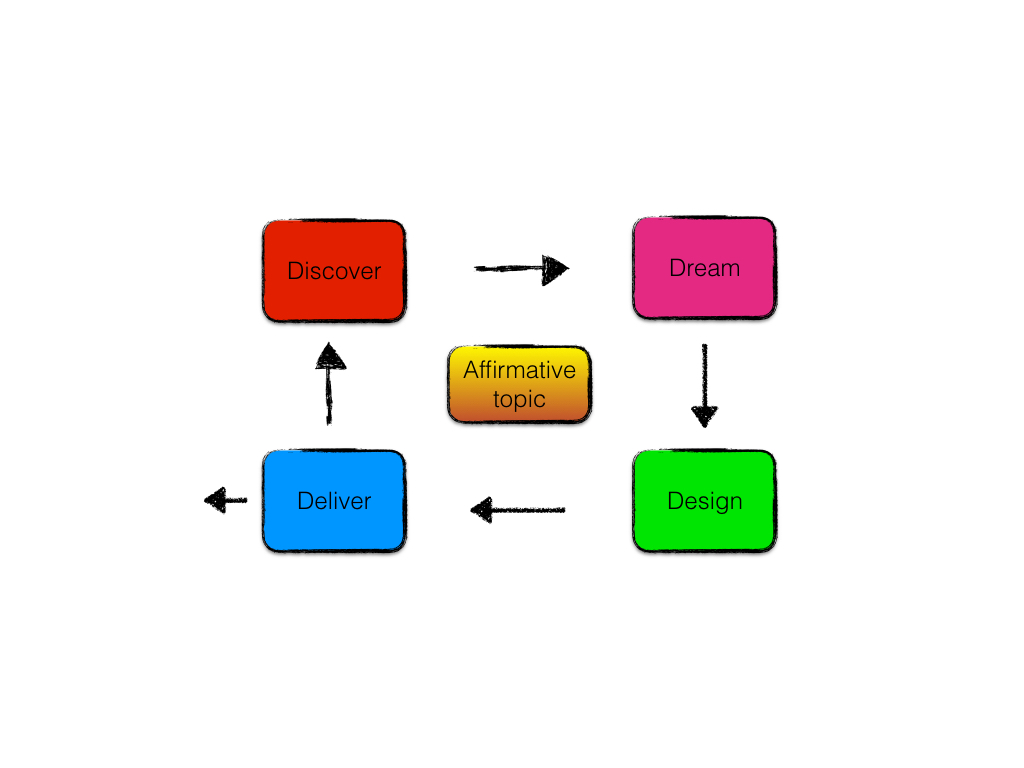4-D cycle
So the topic in AI is not a gap reduction, it's not making something go away. It's what is it, that we want to be? What is we want to become or what is it we want to be able to do in the future? So we have the affirmative topic choice, and we'll talk about examples of that and how you get it. That leads to the beginning of the inquiry. So from the affirmative topic, you decide who all needs to come together to talk about that. Who needs to be in the room?
Discover
When the topic is clear, we move into what we call the discovery phase.
The intention of the discovery is not to talk about the future yet, but to actually go in the past, and reconnect or discover what gives life to when we are at our best? So, this is where we are appreciating our context. We're looking for what is it that's already here that should be valued. When people reconnect with their strengths, in the discovery phase, they see new possibilities almost immediately. So their whole concept of the future broadens and becomes more daring, more of a stretch, less incremental
Dream
Then we move to the dream stage, so now we go to the future question.
In the conversations we begin to look for, where are shared images about the ideal future, or just unusual but very attractive imagery that might of come up in one pair. Nobody else mentioned it, but once it was shared, everybody gloms on to it. It's just that exciting. So we look for the most attractive future images that came up in the discussion initially, and now as a group, we develop even further. And then we share the images that are most attractive to the rest of the people in the room. So now you've filled the room with a lot of positive imagery.
Design
The move from dream to design is a shift from imagery, to actionable ideas. So there's a very important shift between dream and design, where when you get these priority actionable ideas, everybody then gets up and votes with their feet. They go to the one that they most want to help make happen. And then they start what we call the design process. Design includes action-planning, it includes process mapping sometimes. Sometimes it includes defining roles and relationships as we move forward. And it actually includes design, creating prototypes, doing brainstorming and creating rapid prototypes of some part of your intended change effort.
Deliver
Then we move to delivery, which is the declaration of the whole change initiative.
We had an actionable idea. A certain number of people gathered around that, because they were most interested in it. So destiny is any number of change initiatives related to the topics that are ready to be implemented. The two arrows you see at the top there, most typically the change initiatives then move off into their own scenarios. Their own continual learning and adaptation. Sometimes, the change effort leads to a whole new cycle of appreciative inquiry. A more deep dive into a specific aspect of a range of actionable ideas.

